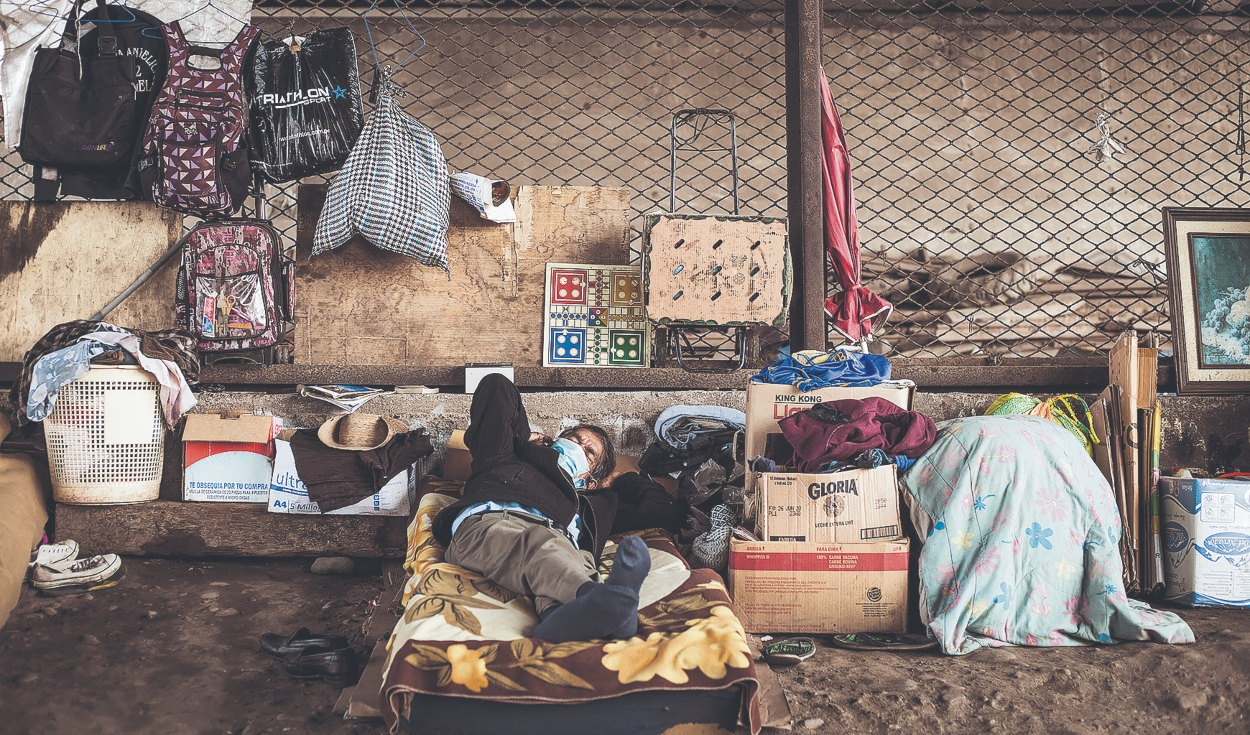
“It has been proven that it does not work for everyone”
José Távara, Research Professor at the PUCP
The limits of the model that has been applied since the nineties have become evident. It has been 35 years of a model that calls for technically managing economic policy, promoting private investment and expecting GDP to grow. so that it drips downwards. I don’t want to caricature it, but I am constantly shocked by the discourse of continuing to support economic growth, period, without any sectoral policies or tax or pension reforms or any that attack underlying problems such as poverty and corruption.
The IMF and the WB draw attention to encouraging inclusive growth, and it depends on the type of growth and investment and quality of essential services, such as citizen security, education and health. The pandemic already left lessons. We do not look to the future and we have a dejected population that survives.
I understand the perniciousness of the populist measures of Congress, but, at the same time, I am outraged by the lack of sensitivity of the technocratic and business elites in the face of serious problems such as the 43% of children with anemia, the 40% of young people who want to leave the country and In the latest employment figures, those under 29 years of age are the most affected.
Everyone repeats the speech of proposing private investment and as if by magic, poverty will disappear. That is not like that. It is not only the poor third of the population, but the other third that is up to their necks in water.
“Nor would it reach a rate of 4 or 5%”
Germán Alarco, research professor at the Universidad del Pacífico
A GDP growth of 3% is not enough to reduce poverty, but another 4 or 5% with the current pattern or growth model would not do so significantly either.
Adjustments are required in the growth model, a reformulation, improvement and expansion of social programs. To design a good strategy, we need to have a good diagnosis to explain our low growth. Without social programs, in 2023, the poverty It would have been 35.1% of the population instead of 29%, 6.1 percentage points more, which is no small feat.
It is mere wishful thinking to insist on greater economic growth based exclusively on private investment.
Not even the most successful economy in our region in its insertion into the international economy like Mexico with US$500,000 million of exports mainly of manufacturing and high performance has achieved it.
The effects of the trickle-down theory are clearly insufficient; However, economic growth and private investment should not be discarded, but in no way should we think about greater prerogatives for the private sector that ignore society and harm the environment. Another key aspect is the tax reform, raising the GDP by 5 percentage points.
“Populist policies have hit growth”
Alfredo Thorne, Former Minister of Economy and Finance
The economic model is fine. What has happened is that growth has slowed down due to populist policies. According to studies by the World Bank and the INEI, growth represents 70% of the reduction in poverty. poverty. What we need is to get back on track and make a more technical and less populist policy.
One of the adjustments should target urban poverty, where in theory it is easier to attack it after its increase. We need to rethink the Midis programs. What is worrying is that Midis has so little impact on poverty reduction. In this 70% reduction in poverty due to growth, it is understood that Midis is not having the desired impact because it has become a political and not a technical ministry to create a formalization program.
I believe that informality is a consequence of the model, but it is because a push for job creation has not been prioritized.
We must get back to basics: growth.
Let’s look at how long Mrs. Dina Boluarte has been in the Government and has not launched any new mining project; as well as infrastructure projects such as Chancay or Jorge Chávez, which are not yet ready. In the agricultural area, the aid that should be given to agriculture has not been given so that growth is much greater.
“Let’s return to the route that took 9.6 million out of poverty”
Hugo Perea, chief economist BBVA Research
In terms of the fight against poverty we have fallen back to 2010 levels. Of the increase of 1.5 percentage points, 1 pp is explained by inflation. Meanwhile, this year with the return to more stable prices, it is not supposed to be repeated.
The result suggests that it was not acted appropriately and the political environment did not help either, as it is dysfunctional. The deterioration of institutionality, which is a necessary condition for the market economy to operate properly, weight. Without adequate institutions, we could grow, but quality services will not reach those most affected.
I suggest going back to the formula that allowed, between 2004 and 2019, 9.6 million compatriots to escape poverty. The rate went from 58% to 20% in 15 years. Is awesome. A society that grows improves its condition. The growth of GDP It is the antidote to poverty. We must reduce paperwork in mining projects. Before there were 12 and now there are 265 processes; In terms of entrepreneurship, there is a lack of uniformity.
In terms of education, the small advances were lost by allowing teachers who do not pass their knowledge tests to return to the teaching career or by weakening Sunedu. This suggests low human capital. You have to look at the evidence.
Source: Larepublica
Alia is a professional author and journalist, working at 247 news agency. She writes on various topics from economy news to general interest pieces, providing readers with relevant and informative content. With years of experience, she brings a unique perspective and in-depth analysis to her work.












